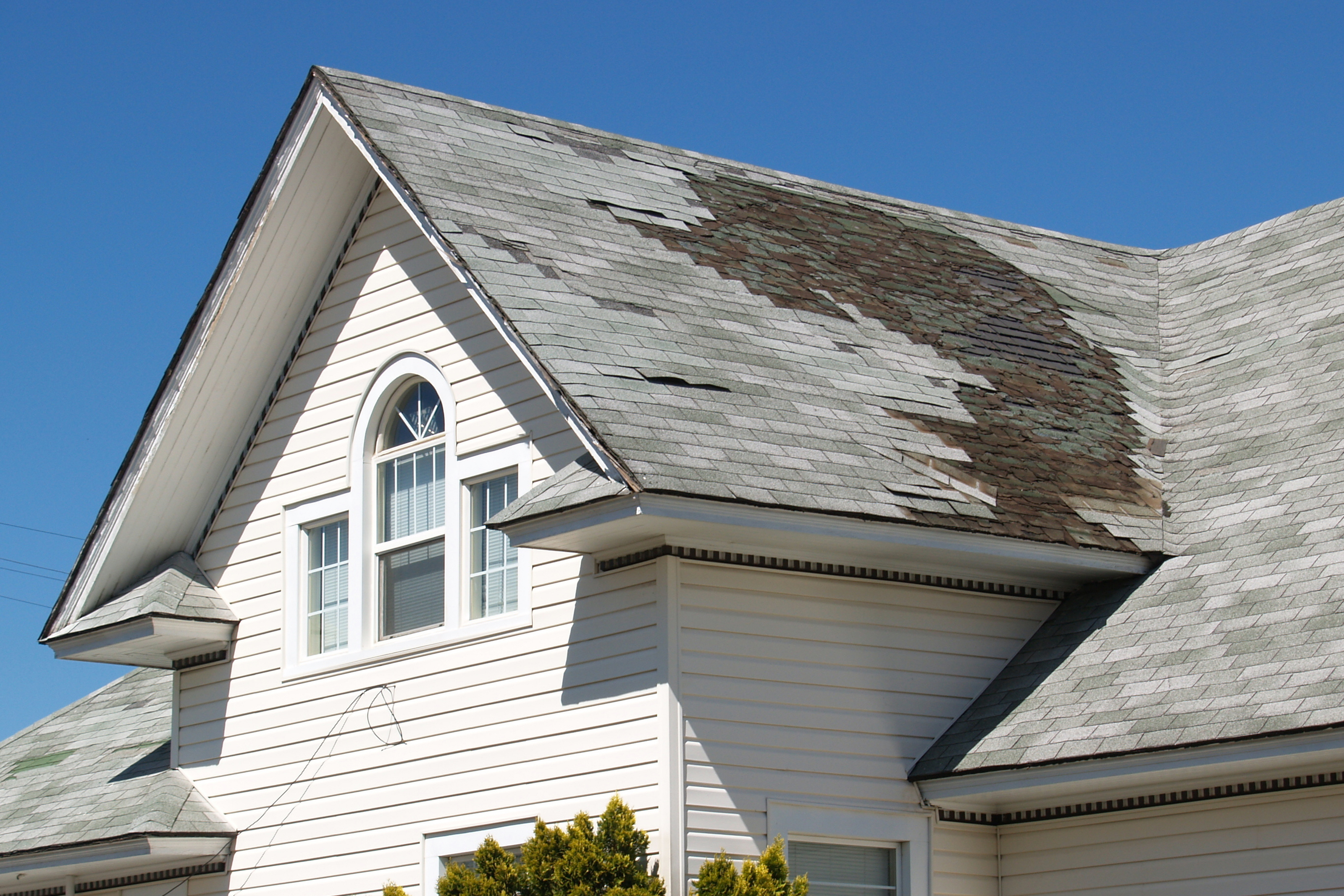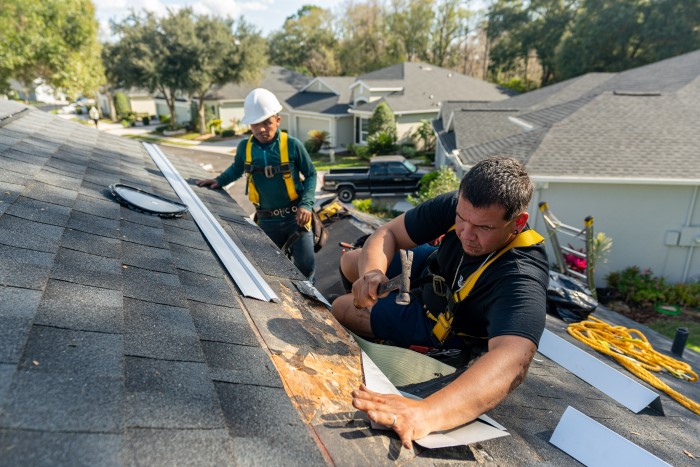Recognizing the Different Kinds of Roofings: A Comprehensive Overview for Homeowners
With an array of options-- varying from the standard gable to the modern flat-- each type offers special benefits and challenges that need to line up with the property owner's environmental factors to consider and specific needs. As we check out the ins and outs of different roofing system types, it ends up being noticeable that one size does not fit all; the right selection may amaze you.
Gable Roofings
Saddleback roofs, defined by their triangular shape, are among the most prominent roofing designs as a result of their simpleness and efficiency in shedding water and snow. This style includes two sloping sides that satisfy at a ridge, enabling reliable water drainage and minimizing the danger of water buildup. The steep pitch commonly related to saddleback roofs improves their capability to handle hefty precipitation, making them appropriate for different climates.
In enhancement to their useful advantages, saddleback roofs provide aesthetic versatility. They can be adapted to various architectural styles, from conventional to modern-day homes. The design can also accommodate extra features such as dormer home windows, which enhance natural light and ventilation in the attic area.
In addition, saddleback roofs provide enough space for insulation, adding to energy effectiveness. Homeowners can pick from a variety of roofing materials, including asphalt tiles, metal, and tiles, even more enhancing modification choices.
Regardless of their benefits, gable roofs might need extra support in areas susceptible to high winds or hefty snowfall. Generally, the saddleback roof continues to be a favored choice because of its mix of functionality, sturdiness, and aesthetic charm.
Apartment Roofs
Flat roofing systems are commonly identified for their minimal style and sensible applications, specifically in commercial and commercial settings (oahu roofing). These roofings feature a almost horizontal or straight surface area, which permits easy building and flexible space usage. While they may do not have the visual allure of angled roofs, flat roofs use many benefits, particularly in city atmospheres where making the most of space is important
One of the main benefits of level roofings is their access. Property owners can use the roofing system space for various objectives, such as rooftop yards, terraces, or photovoltaic panel installments. Furthermore, flat roofings are generally extra economical to maintain and mount contrasted to their sloped counterparts, as they require fewer products and labor.
Nonetheless, level roofings do present specific obstacles. Appropriate water drainage is vital to avoid water pooling, which can cause leakages and architectural damages. Thus, selecting high-quality waterproofing products and routine evaluations are vital for making sure long life. Common products used for level roof coverings consist of built-up roofing (BUR), modified bitumen, and single-ply membranes, each offering unique advantages. Generally, level roofing systems serve as a practical and adaptable choice for many property owners and organizations alike.
Hip Roofs
Hip roofs are identified by their sloped sides that merge on top, developing a ridge. This layout stands out from gable roofs, as all four sides of a hip roof slope downwards toward the walls, supplying a much more steady structure. The angle of the slopes can differ, permitting flexibility in building visual appeals and performance.
One of the key benefits of hip roofings is their capability to endure hefty winds and damaging weather. The sloped surface areas make it possible for much better water drain, decreasing the danger of leaks and water damages. Furthermore, hip roof coverings use enhanced attic area, which can be made use of for storage space or even converted right into comfortable locations.
However, constructing a hip roofing can be extra costly and complicated than easier roof covering types, such as saddleback roofs. The extra product and labor associated with producing the slopes and ensuring appropriate architectural honesty can result in greater costs. Regardless of these disadvantages, several homeowners prefer hip roofing systems for their resilience, aesthetic charm, and potential for power efficiency.
Mansard Roofings
Mansard roof this page coverings, typically acknowledged by their unique four-sided layout, function 2 slopes on each side, with the reduced incline being steeper than the upper. This architectural style, originating from France in the 17th century, is not just cosmetically appealing however practical, as it makes the most of the useful space in the top floorings of a structure. The high lower incline permits even more clearance, making it an optimal selection for loft spaces or attics, which can be converted right into living spaces.
Mansard roofings are identified by their flexibility, accommodating various building designs, from conventional to modern. They can be created with different products, consisting of asphalt shingles, slate, or metal, giving home owners with a series of alternatives to fit their budget plans and choices. Furthermore, the design permits the combination of dormer home windows, boosting all-natural light and ventilation in the top levels.
Nonetheless, it is necessary to think about the potential downsides. Mansard roof coverings might call for even more upkeep as a result of the intricacy of their layout, and their high inclines can be testing for snow and rainfall overflow. Overall, mansard roofing systems combine sophistication with functionality, making them a prominent option amongst home owners seeking distinct architectural features.
Shed Roofings
As homeowners significantly seek simpleness and functionality in their architectural styles, shed roof coverings have become a preferred option. Defined by a single sloping plane, a shed roof covering offers a minimalist aesthetic that enhances different home designs, from modern to rustic.
Among the primary benefits of a shed roofing system is its simple building, which often converts to lower labor and product prices. This layout allows for efficient water drain, minimizing the risk of leaks and water damages. In addition, the vertical slope gives ample room for skylights, enhancing all-natural light that site within the inside.
Dropped roofing systems also link offer flexibility in terms of usage. They can be successfully incorporated right into enhancements, garages, or exterior frameworks like pavilions and sheds. In addition, this roofing system design can accommodate different roof products, consisting of steel, asphalt roof shingles, or even environment-friendly roofs, lining up with eco-friendly campaigns.
Nevertheless, it is vital to consider regional environment conditions, as heavy snow tons might necessitate changes to the roofing's angle or framework. Overall, lost roofings present a useful and cosmetically pleasing choice for property owners wanting to optimize performance without jeopardizing style.
Conclusion


Gable roofing systems, identified by their triangular form, are amongst the most popular roofing designs due to their simplicity and performance in dropping water and snow. oahu roofing. The high pitch frequently linked with gable roofings enhances their capability to handle heavy precipitation, making them appropriate for different climates
While they might do not have the visual allure of pitched roofs, level roofing systems supply countless benefits, specifically in urban environments where taking full advantage of room is critical.

Comments on “Roofers Oahu: Experienced Contractors for Roof Installations and Repair Works”